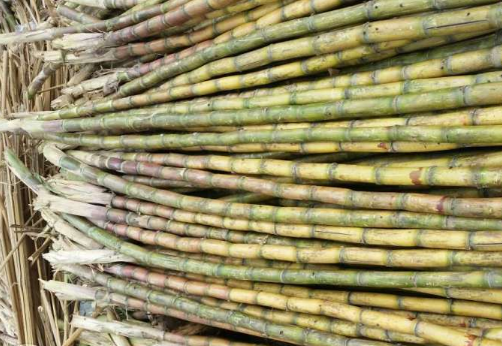An interim Sugarcane Pricing Committee constituted by the Ministry of Agriculture has approved an increase in the price of cane from the current Sh3, 700 per tonne to Sh4, 040 per tonne effective April 1, 2021 in line with the industry cane pricing formula.
Ministry of Agriculture Cabinet Secretary Peter Munya directed millers to adhere to the new prices while making payments to the farmers adding that any farmer being paid less should report the miller.
“Any cases of noncompliance will attract a fine of not less than Sh50, 0000 or one-year imprisonment as per Section 37 of the Crops Act, 2013,” said Munya.
Speaking at Kilimo House on Tuesday while giving an update of the sugar sector, Munya said that sugarcane prices to farmers had stagnated at Sh3, 700 since the last review by a similar committee in 2018.
Munya highlighted that there has been a lot of concern from the farmers on the inability of the millers to harvest their cane on time and this has led to delay for up to 48 months.
“My ministry through Agriculture and Food Authority (AFA) held consultative meetings with millers from the affected areas with a view of coming up with agreeable solutions and there was an urgent request by the millers for the government to roll out implementation of the Crops (Sugar) (General) Regulations, 2020 whose impact would be coordination of the sugar sector, thus linkages between millers and growers,” explained Munya.
The Cabinet Secretary said that they have put in place a sensitization cum registration exercise of growers through print and electronic media in a bid to reach out to the ‘independent growers’ whose cane is not captured in the mill harvesting program.
Munya added that millers were encouraged to enhance their capacities where possible with special request for the government to fund the rehabilitation of state owned mills which would otherwise lead to absorption of the excess sugarcane.
“We have also witnessed enhanced capacities by some private millers through setting up of new sugar mills, for example, West Kenya Sugar Company – Naitiri Unit in Bungoma County, is 80% complete and targets commissioning in August 2021. This would greatly enhance absorption of cane in the area and neighboring catchment,” said Munya.
He added that there are other applications for setting up of new sugar mills in Siaya, Kilifi, Kisii, Uasin Gishu and Tana River Counties.
The Cabinet Secretary said that the sugar industry has steadily expanded over the years with the area under cane having increased from 126,826 hectares in 2002 to 202,616 hectares at the end of 2020 signifying an increase of 60%.
“In 2020, total area harvested was 89,803 hectares compared to 71,935 hectares in the period of January to December 2019, signifying a 26% increase. This increase was attributed to the fact that most private mills were operating almost at their optimum capacities due to improved availability of mature cane for harvesting,” explained Munya.
He said that the sugar industry reported average cane yields of 61.64 tonnes per hectare in 2020 compared to 51.26 tonnes per hectare in 2019 representing a 20% increase.
“The total cane deliveries in the period of January to December 2020 was 6,799,923 tonnes against 4,605,102 tonnes recorded during the same period in 2019. This represents a significant increase of 48 per cent. The increase is partially attributed to favorable weather conditions and optimal operations of the private mills,” said Munya.
He said that the sugar industry has witnessed a steady increase in sugar production due to enhanced investments by both Government and private players.
“In 2020, a total of 603,788 metric tonnes of sugar was produced compared to 440,935 metric tonnes in 2019. This signifies an improvement of 37% in local sugar production. The sugar cane availability survey conducted by AFA in December 2020 established that there will be enough cane to produce at least 660,000 metric tonnes of sugar this year. True to this projection, the first two months of 2021 have recorded production of 119,552 Metric tonnes of sugar indicating the capability to achieve this forecast.
Munya, however noted that increase in population has had an upward push in sugar consumption outpacing domestic production.
“The country has not reached self-sufficiency in sugar production. For this reason, the country will this year be filling the deficit by importing sugar, especially from the Common Market for Eastern and Southern Africa (COMESA) region.
To bridge the gap, Munya said, in January to December 2020, a total of 442,393 tonnes of sugar was imported which includes 140,123 metric tonnes of industrial sugar. COMESA countries supplied 343,087 tonnes, which represents 78 per cent of the total imports in this period. All brown/mill white sugar originated from the COMESA region while the balance (22 per cent) was imported under duty remission scheme from the rest of the world.
“With an anticipated production of 660,000 tonnes and a consumption of 1,067,099, our annual sugar deficit for the year 2021 stands at 210,163 tonnes of mill white and brown sugar which the country shall import to bridge the gap. This figure represents a drop in importation by 40,000 metric tonnes from 2020 projected deficit of 250,000 metric tonnes,” said Munya.
He said that his ministry has put in place systems to ensure that only the deficit quantity shall be imported by registered and licensed importers.
“All sugar importers are therefore encouraged to comply with the Crops (Sugar) (Imports, Exports and By-Products) Regulations, 2020,” said Munya.
By Joseph Ng’ang’a




